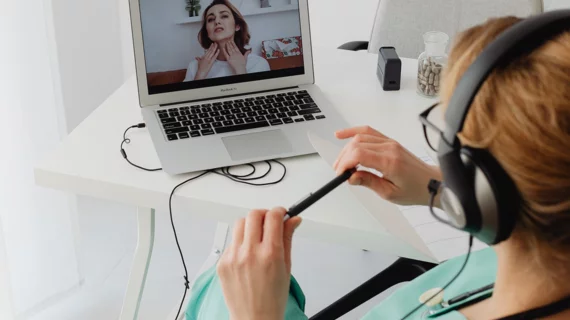Radiologists help launch Uber-like service providing imaging consultations across the globe
Radiologists are sharing their experience with helping to launch an Uber-like service that provides imaging and other clinical consultations to physicians across the globe.
Experts first designed the program in 2022 to provide subspecialty advice to clinicians in war-torn Ukraine. Those involved have used secure web applications, telehealth platforms and image sharing services to make the program a reality, according to an analysis published in the Journal of the American College of Radiology.
Success in Ukraine also led to Shlomit Goldberg-Stein, MD, and colleagues developing a parallel international program for Department of State employees and families around the world. Combined, the two efforts have provided nearly 400 consultations. About 37% of radiology encounters in the DOS program have provided alternative diagnoses, demonstrating the “high value add.”
“Our telehealth infrastructure and workflows, optimized through iterative improvements, have unleashed the expertise of our subspeciality providers across the world,” concluded Goldberg-Stein, who is a MSK radiologist with Northwell Health in New York, among other titles. “Our consultations served as steppingstones to strong international physician relationships, yielding positive advances in educational and clinical programs abroad.”
To launch the effort, those involved established a memorandum of understanding with the Ukrainian Ministry of Health, allowing them to provide consultations for any physicians seeking support. Between May 2022 and August 2023, the Ukraine program provided 114 subspecialty radiology consults. It also handled over 50 WhatsApp chats, exchanged 1,000-plus messages, and logged a 92% overall consult response rate.
Meanwhile, the Department of State offering provided another 275 consultations between 2022 and 2023. This included 70 subspecialty radiology consults and a 36% to 38% rate of alternative diagnoses. About 20% reflected a moderate or major change in imaging findings, impacting immediate treatment, or the need for hospitalization or surgery. Some examples included an initially undetected clinically significant pulmonary embolism on chest CT and the determination of an intact ACL on knee MRI (which was initially diagnosed as a rupture).
Musculoskeletal radiology was the most in-demand subspecialty (42%), followed by abdominal and neuroradiology (both 24%). The program’s model allowed for radiologists to opt-in to available consults and provided them with a streamlined distribution of work, the authors noted.
“Live consultations led to collaborative discussions, wherein physicians strategized optimal practices and treatment options for patients. These included training Ukrainian surgeons on novel techniques and providing evidence-based pathways for nonsurgical medical treatments,” the authors wrote.
“In sum, this physician-to-physician consultation program was built upon the foundation of modular workflows, accessibility offered by messaging apps, and adaptability to the evolving needs of our Ukrainian partners. Relationships extended beyond clinical consultations, enriching other programs and both clinical and educational pathways,” they added later.
Read much more, including potential study limitations and other lessons learned, at the link below.

